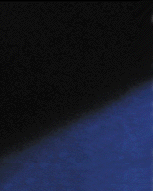Korean Classical Music - Gugak
The Korean classical music is called Gugak. That possesses tradition and characteristic of Korean culture. The name of korean classical music, Gugak is first used in Jangakwon in end of Joseon period. Gugak defines an art native to Korea and keep our traditional music.
Music history has a close relationship between fine art, literature, drama, theater and dance also, politics, economic, society. Korean music is very lonely and sad. If we look back Korean history, Korean had many invasion of other countries and they constantly had to suffer and fight for their freedom. That is why Korean music is filled with sorrow and darkness, especially during Goryeo period.
When Dang-ak entered into Korean music, they imitated it. A-ak was played during the great event of nation. Those foreign musics are expanded quickly in Korea, as if these have better rhythm or quality of music than Hyang-ak. Korean Musician did not stop instruct brilliance of Hyang-ak (indigenous[native] Korean music). Combining with foreign musics like Dang-ak and A-ak, Hyang-ak grew up till it became famous, even under the external pressure.
Korean musics can be divided into three different parts, A-ak, Dang-ak and Sogak depended on the current of the times. Hyang-ak and Sogak mean pure tradition music.
These musics were only played in royal palace or aristocracy. Therefore Hyang-ak and Sogak are not common traditional music. In Goyreo period, they used Sogak rather than Hyang-ak. In Joseon period, A-ak and Sogak were clearly separated each other and Sogak included Dang-ak and Hyangak. That's why in history point of view, there are only three division which are A-ak, Dang-ak and Hyang-ak.
By the definition, A-ak is classical music of the 'Empire of Song' and is used for ceremony in Palace. Dang-ak is from the 'Empire of Dang' and includes Chinese Sogak from the 'Empire of Song'. These musics are from China, however there are many changes into korean style of music which make unique and uncommon from other tradition music.
This improved music is called Hyang-ak. Minsogak (folk music) includes Pansori (a long epic song; a solo opera drama), Sancho, Japga (a popular folk song), Minyo (a folk song), and Nong-ak (instrumental music of peasants, a farm music). And there are many other Korean tradition music. |

